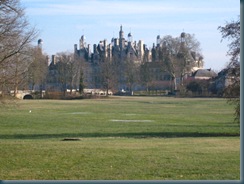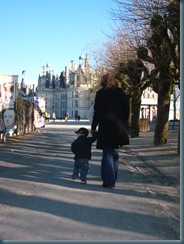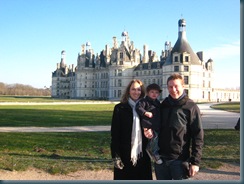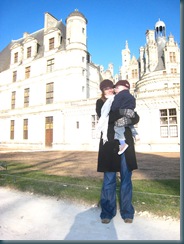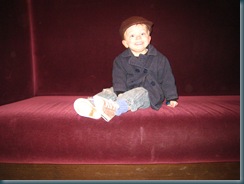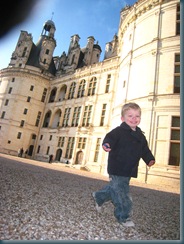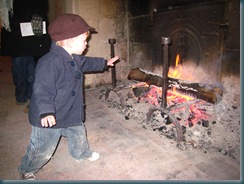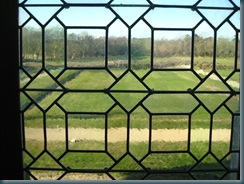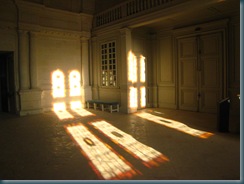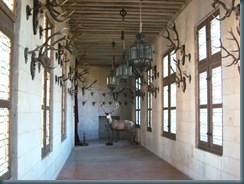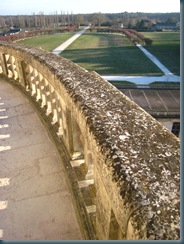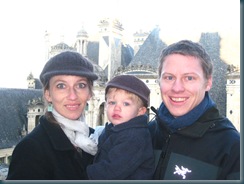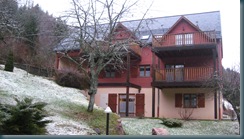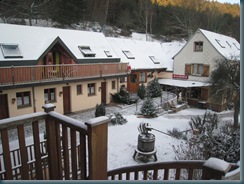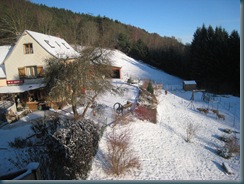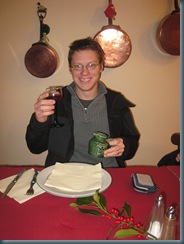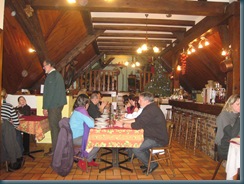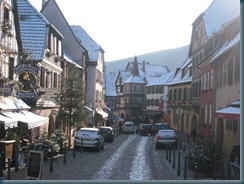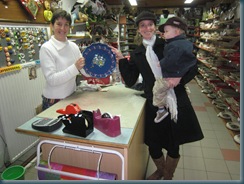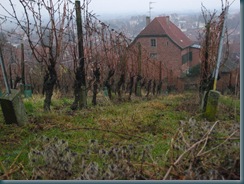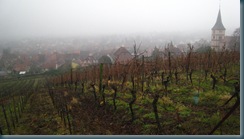On Jan. 5th our only occupation was to drive back to Paris and prepare to fly out the next morning. We decided to spice up the drive by detouring through the Loire Valley to visit the Chateau de Chambord, one of the largest and most impressive of the Loire chateaux. And here it is as we approach.
Few things are as cute as little boys running, seen from behind.
Posing in front of the imposing facade. A whole busload of Chinese tourists had just arrived and were crazy about Sawyer—they took pictures of him running around all through our visit.
Blue skies, but it was freezing, freezing, freezing…
Sawyer poses on the luxurious benches in the ticket office.
Lots of good running terrain.
Freezing, yes, but there was a good fire on each level where visitors could warm their bones before moving on.
The chateau was began by Francois I in the early 16th century, to celebrate his victories in Italy and serve as a hunting lodge. He never saw it completed though.
Louis XII and XIV were responsible for finishing construction.
And the 18th century is responsible for how most of the interior looks today. This is the hunting corridor.
The roof provides great views of the grounds…
And the scores of chimneys.
What a great trip it was! We hope we can do something like it again before too long. Happy New Year everyone!
